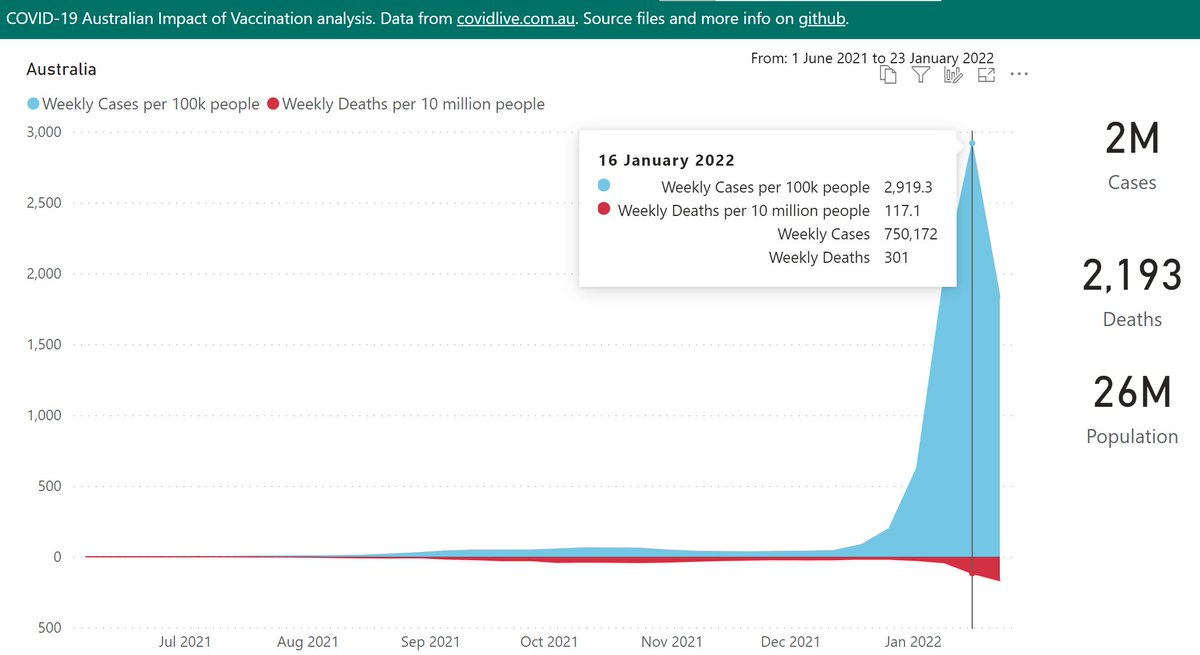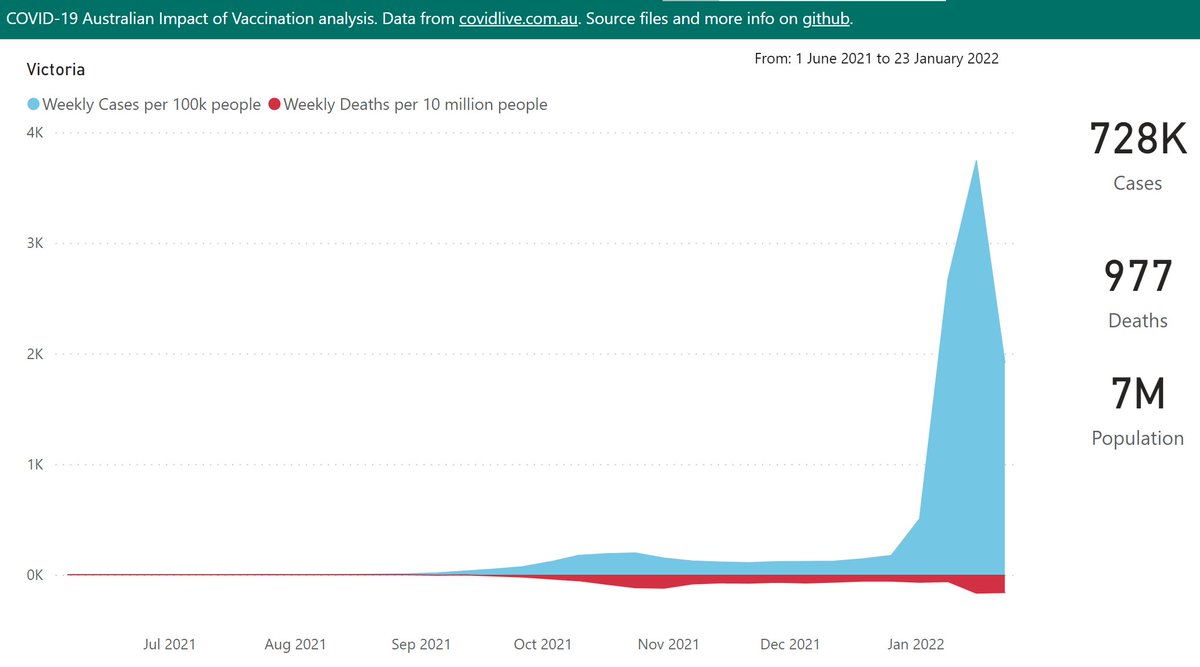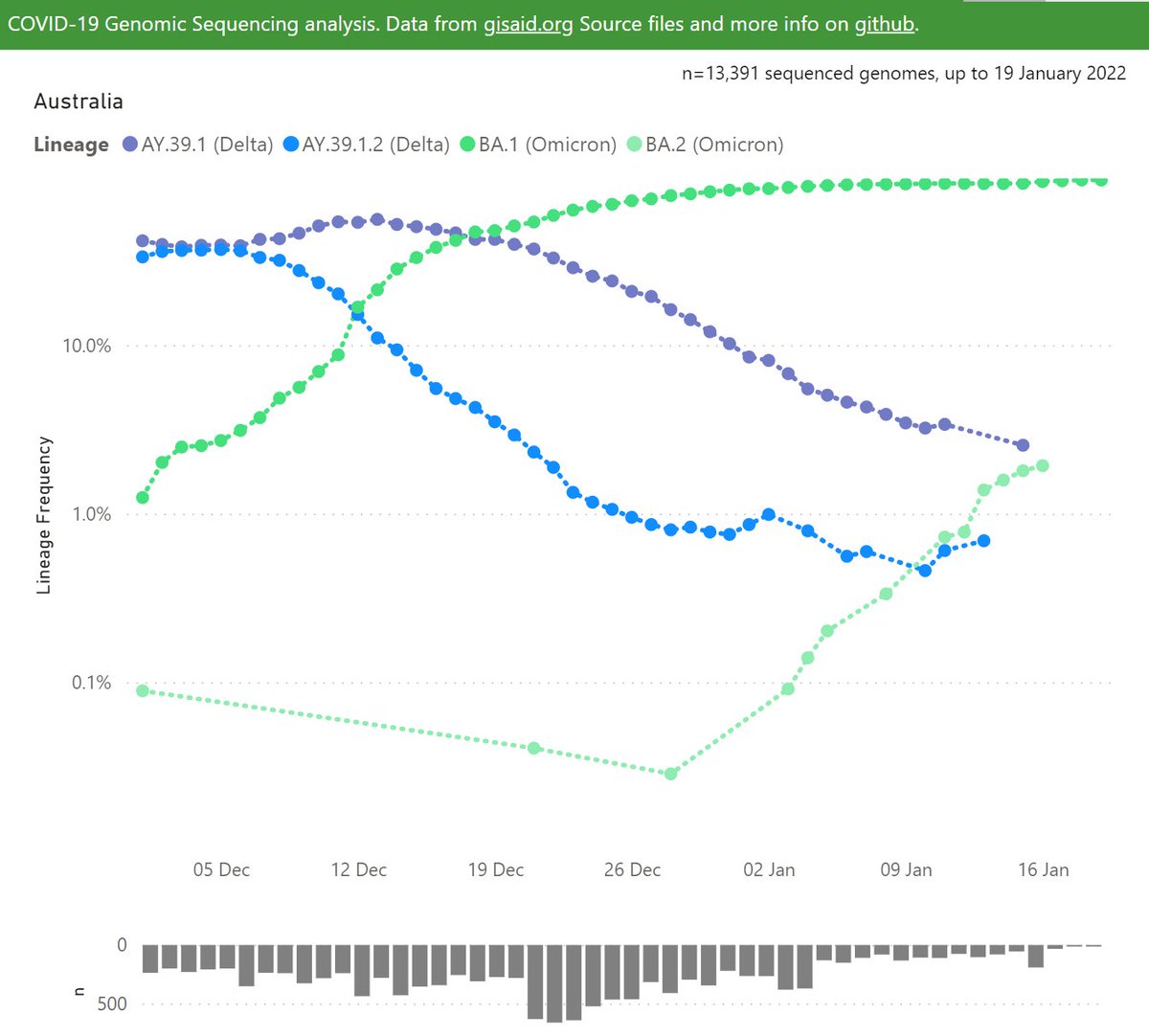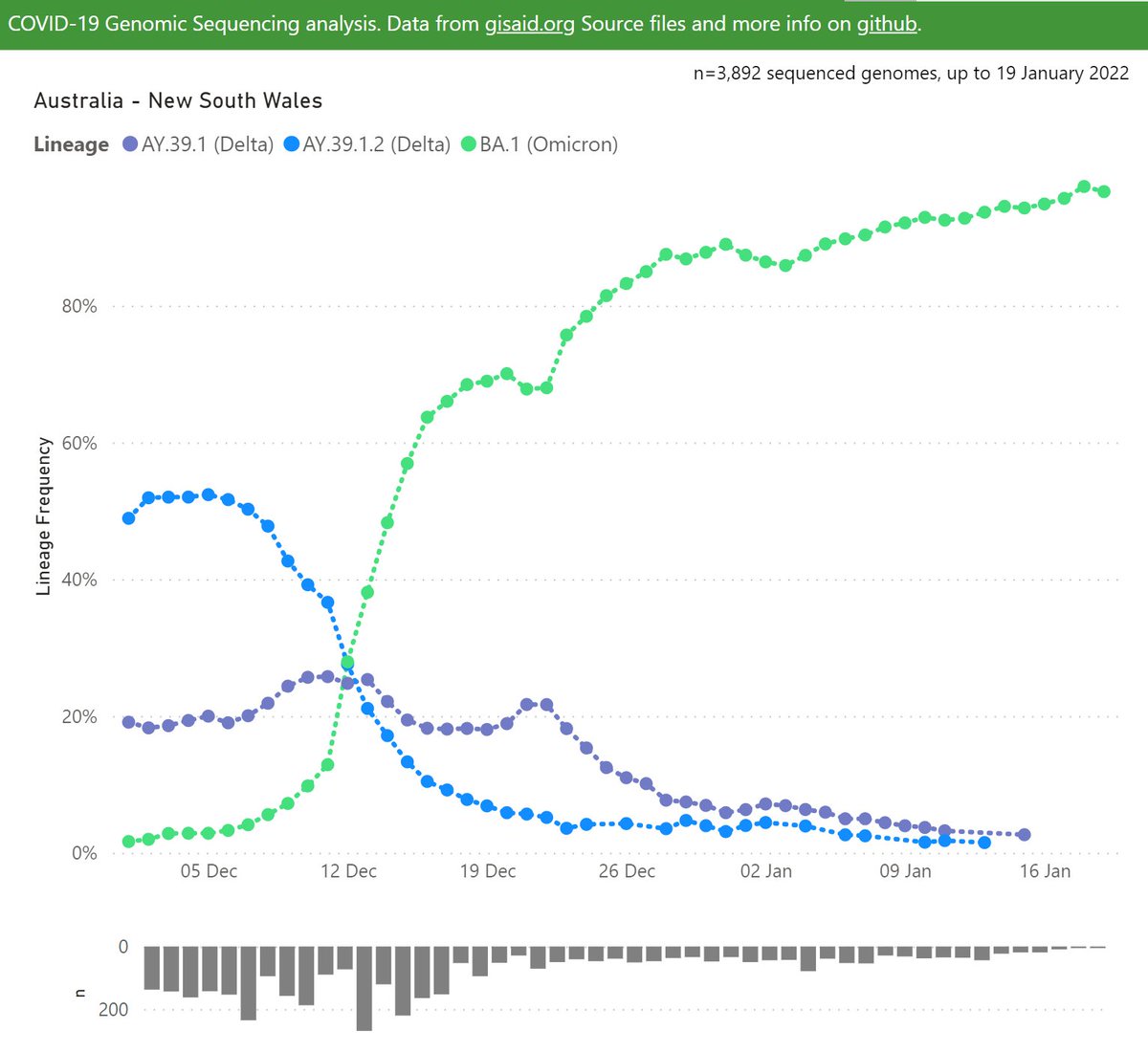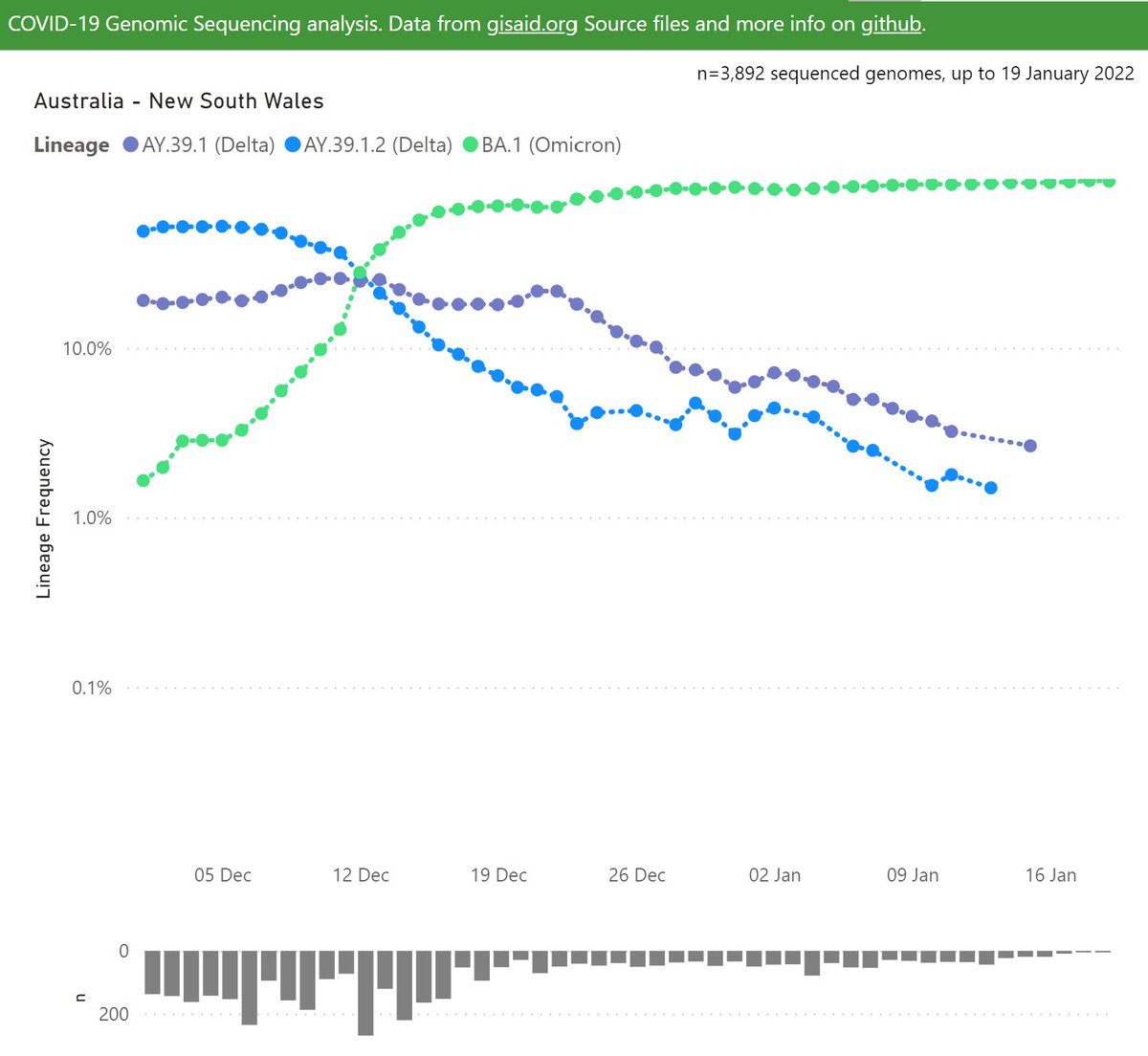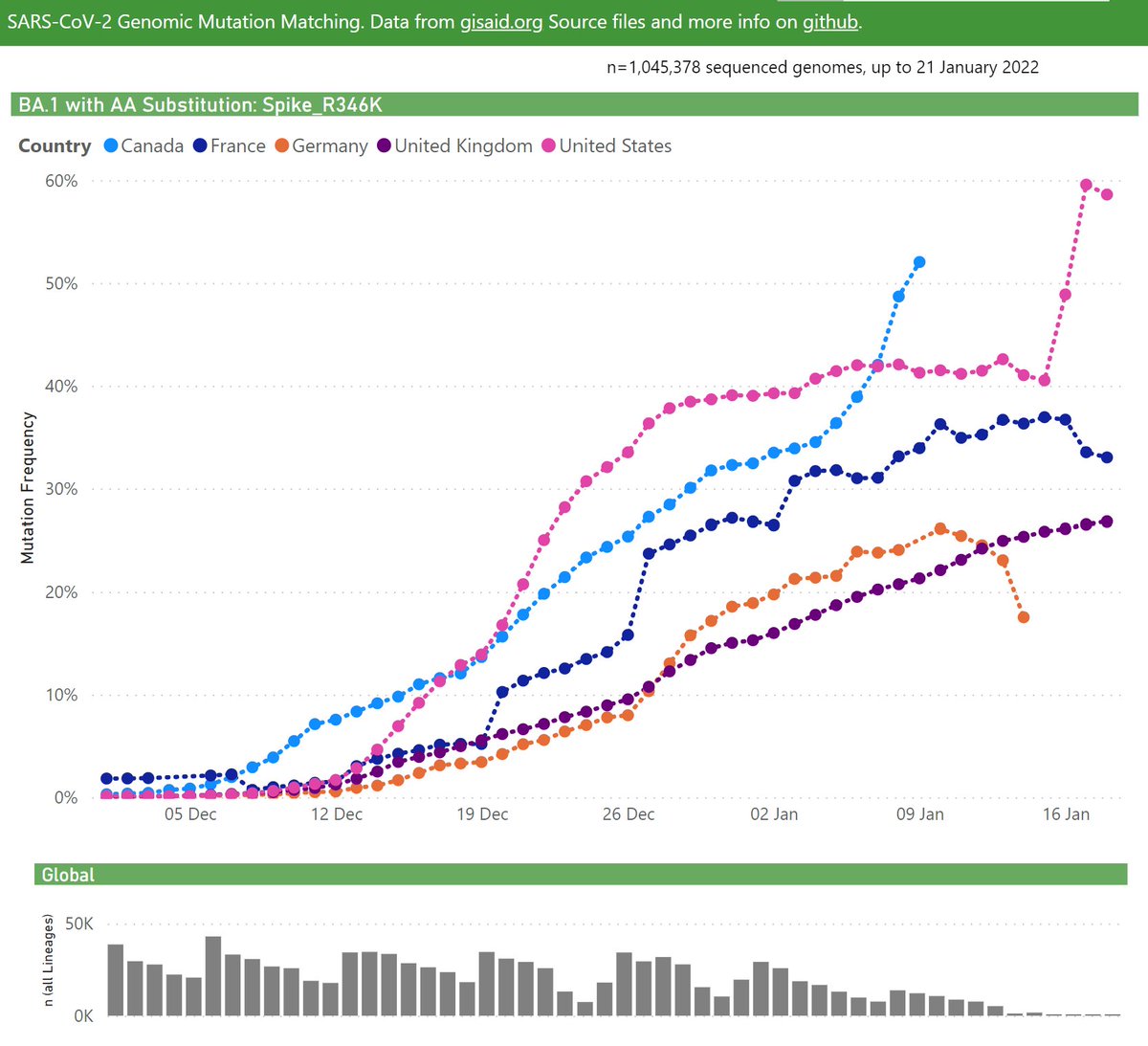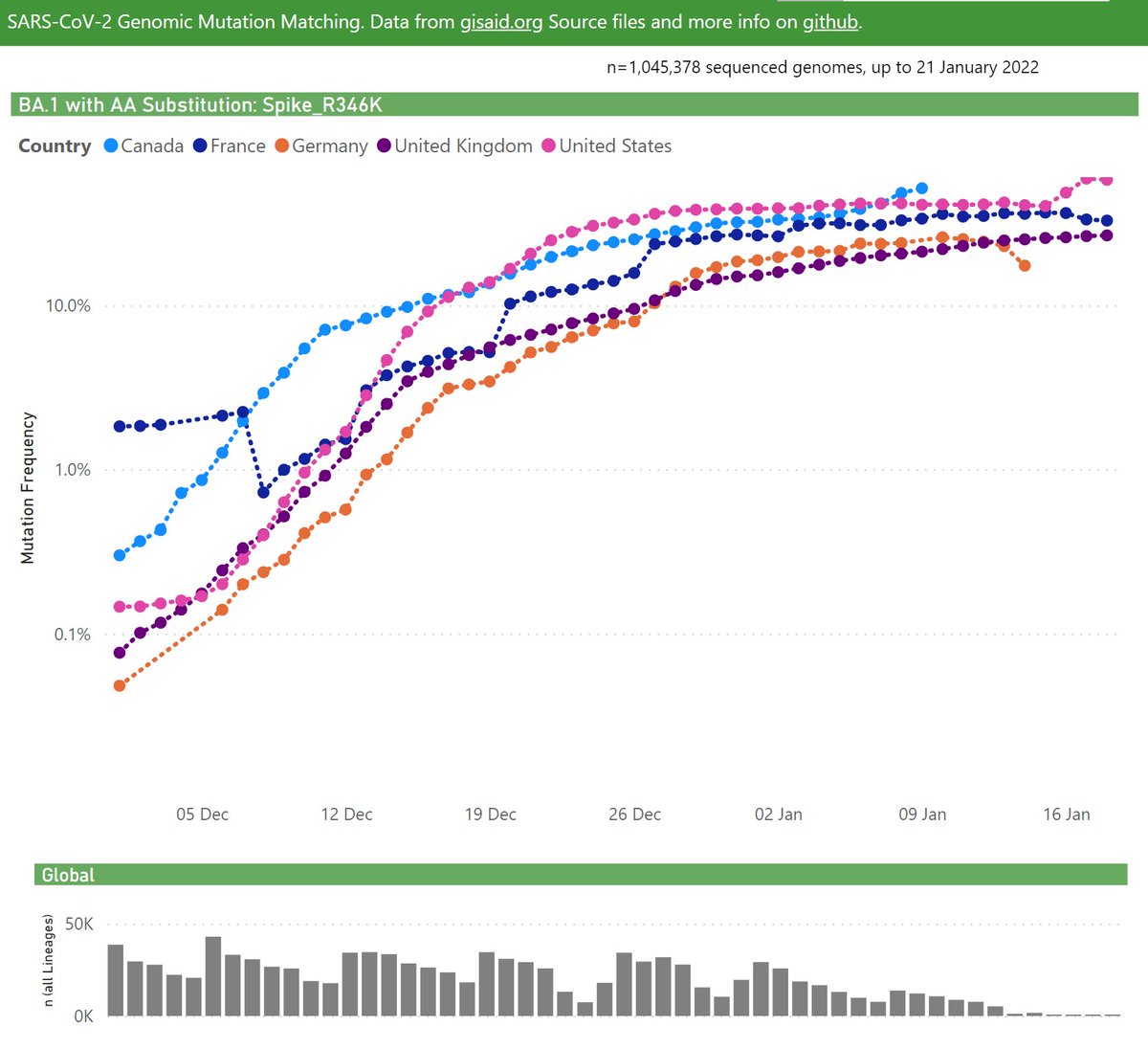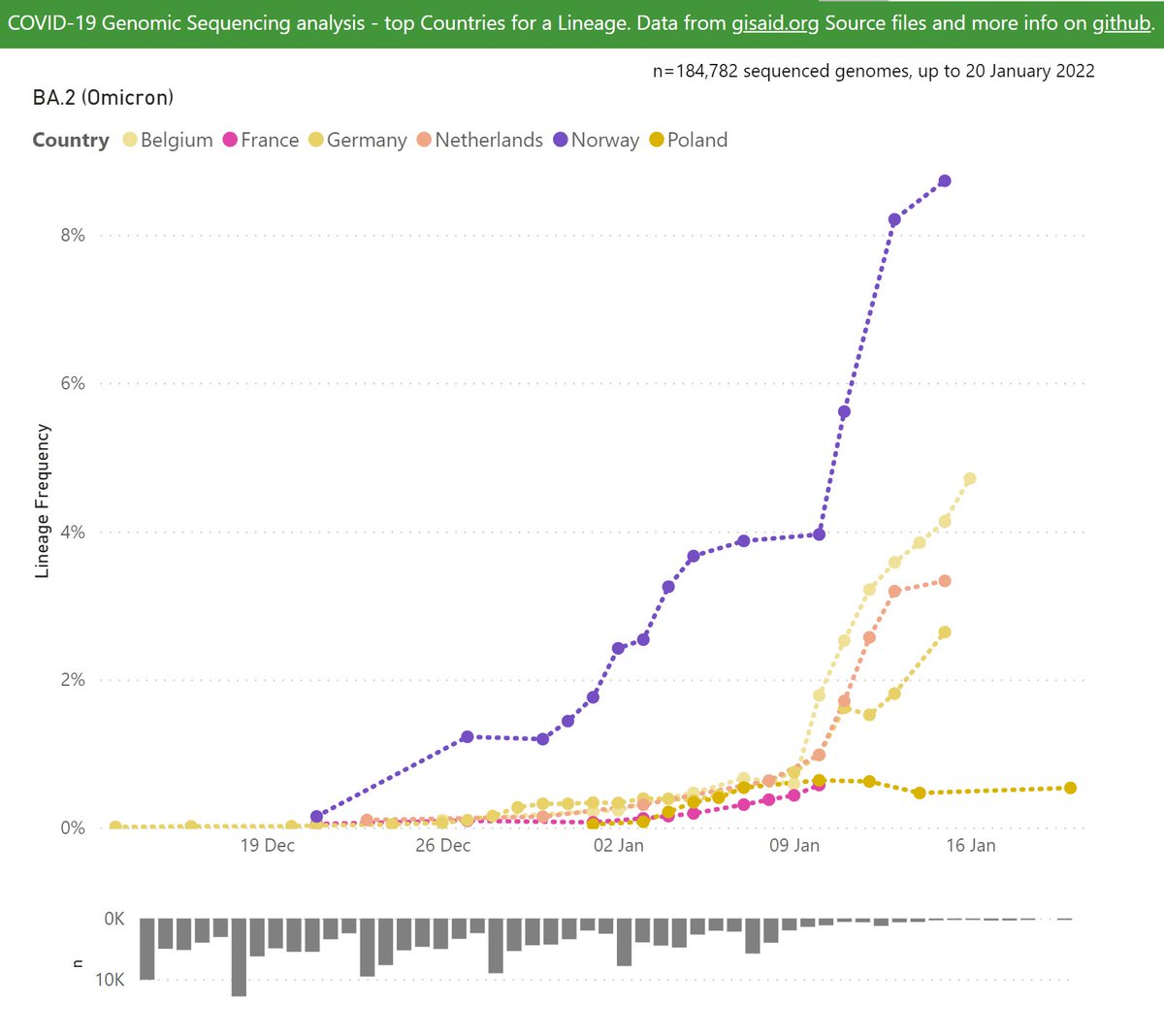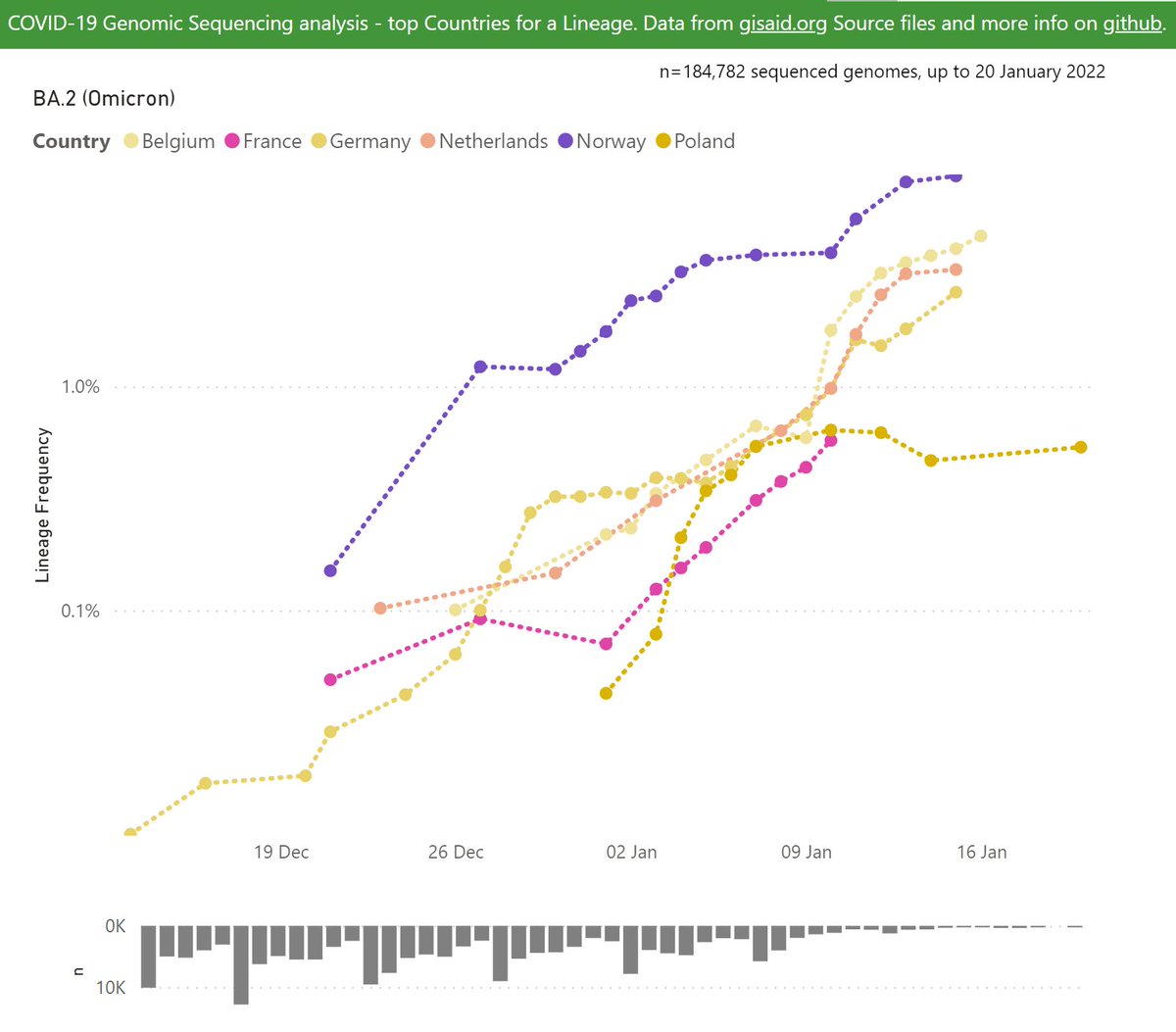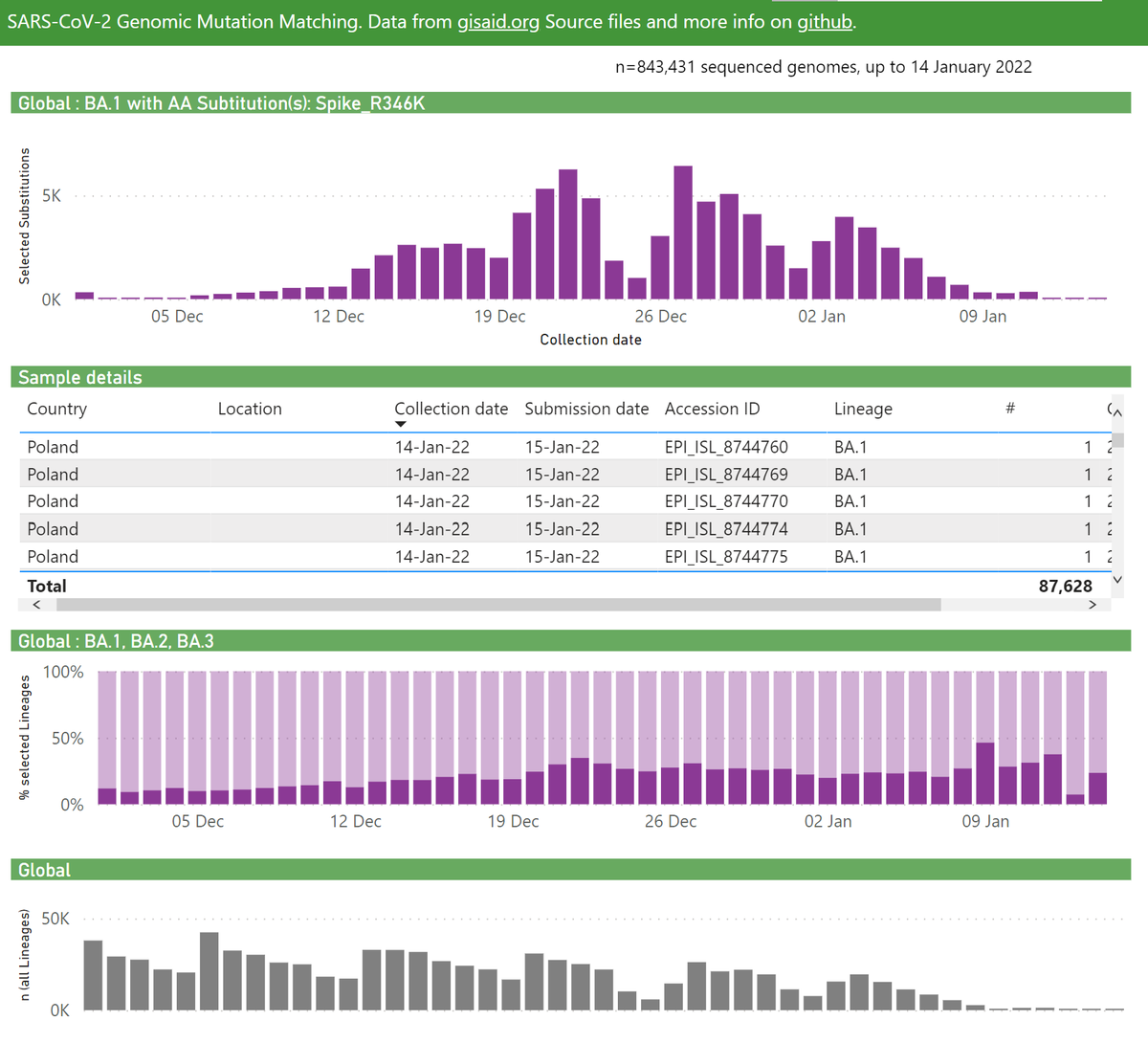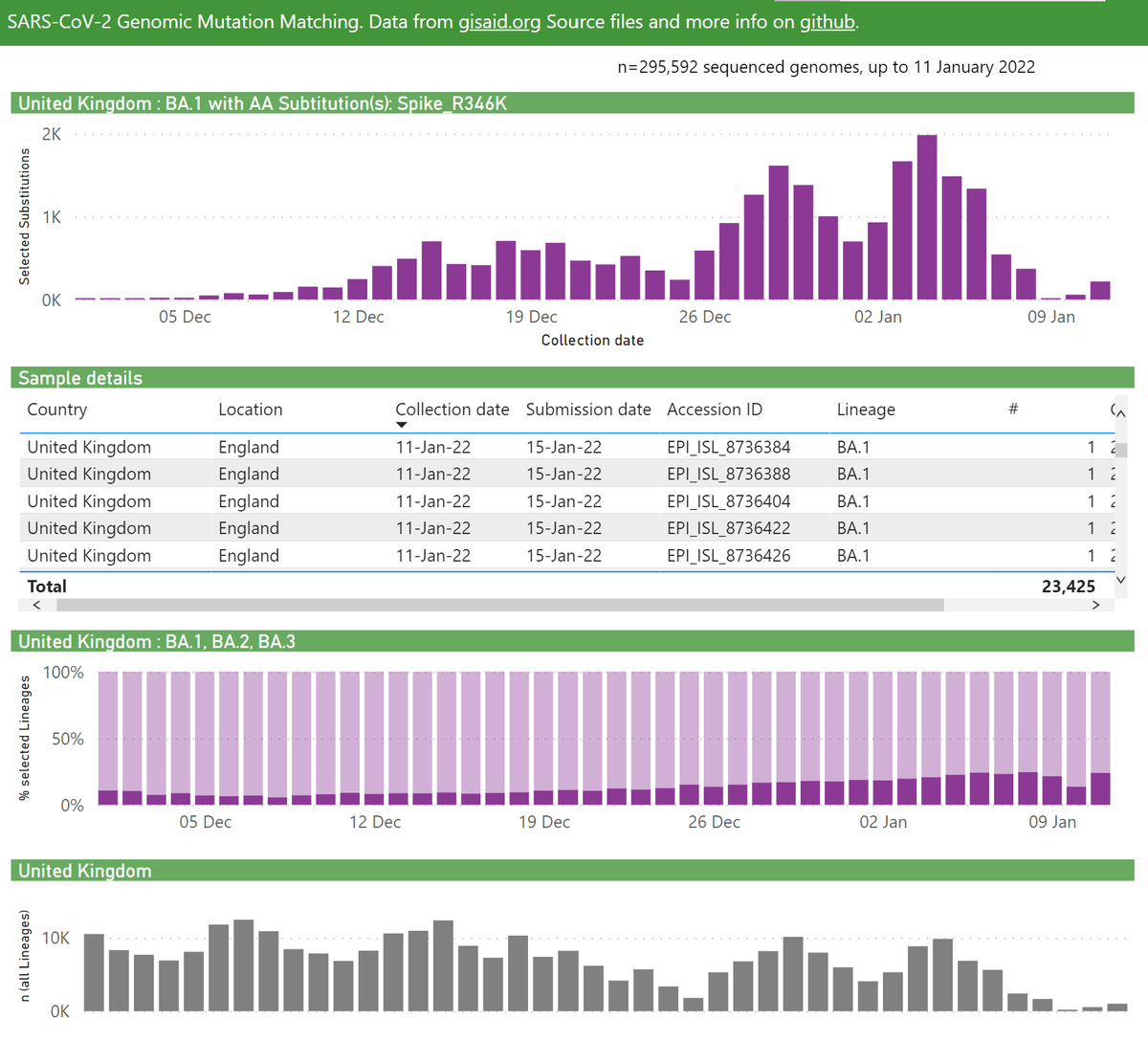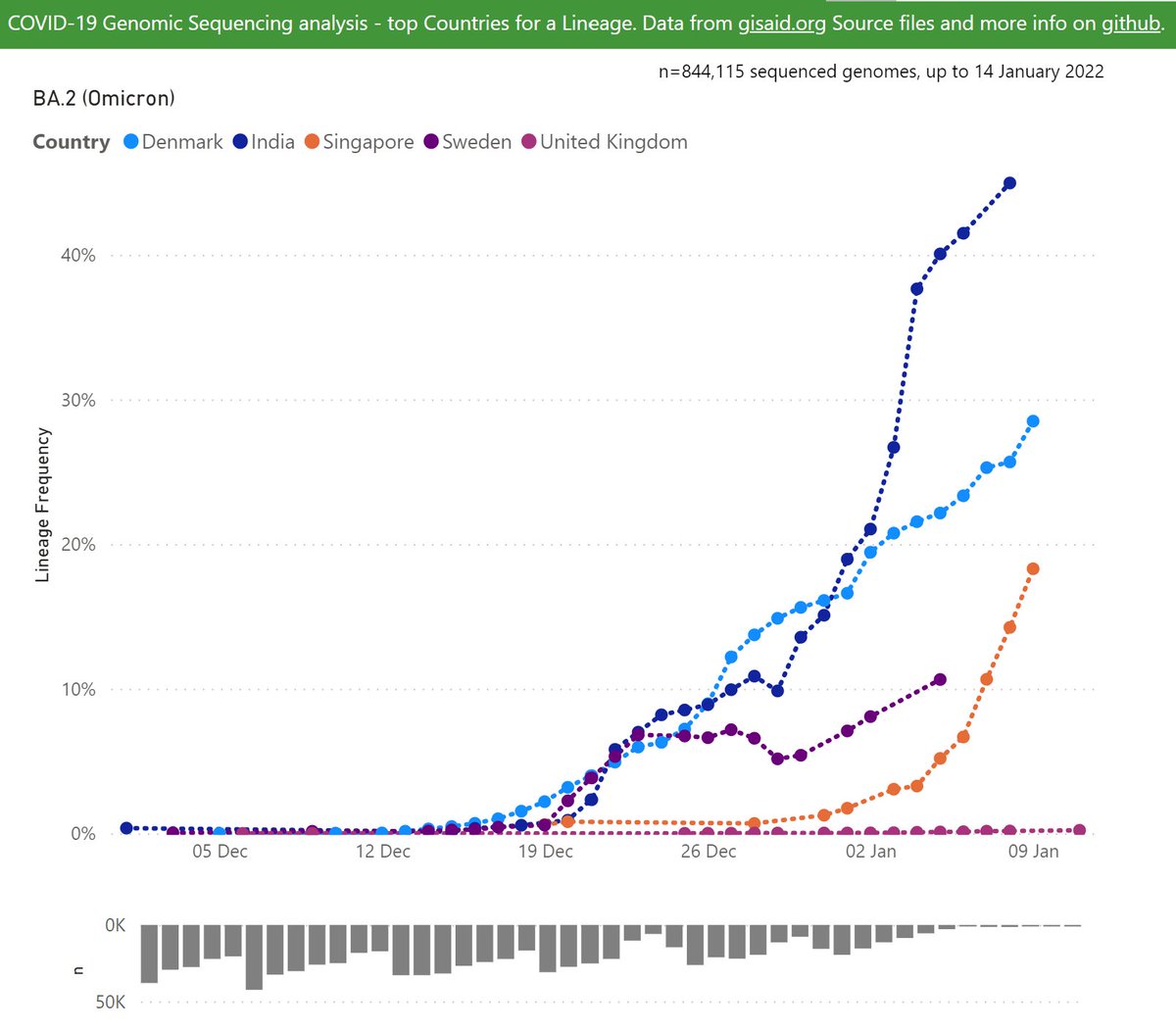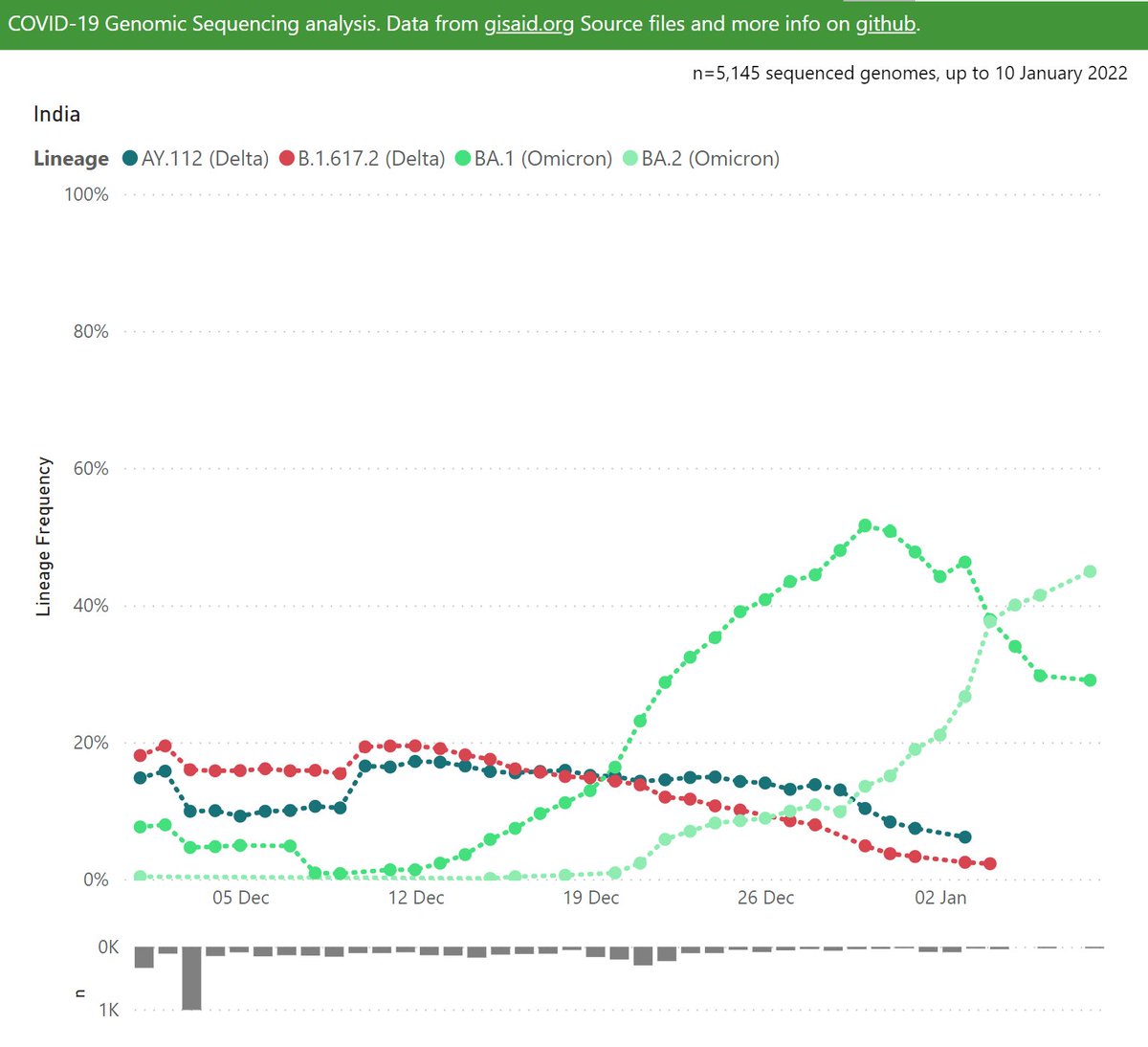
Here's the latest variant picture for New Zealand.
The lineage (BA.1) Omicron is dominant globally, also recently in NZ samples. The BA.2 sibling lineage is also present at significant frequencies.
🧵

The lineage (BA.1) Omicron is dominant globally, also recently in NZ samples. The BA.2 sibling lineage is also present at significant frequencies.
🧵


An Omicron community outbreak was just reported, but those samples will not be sequenced for a few more days yet.
Hopefully this analysis provides some guidance on the likely composition of that outbreak.
TL/DR; it depends.
Hopefully this analysis provides some guidance on the likely composition of that outbreak.
TL/DR; it depends.
BA.1 with the Spike R346K mutation was classified quite recently as BA.1.1. That mutation is understood to give increased immunity escape.
That lineage change has not yet flowed out to databases and websites.
Here's the frequency of BA.1.1 in NZ samples:

That lineage change has not yet flowed out to databases and websites.
Here's the frequency of BA.1.1 in NZ samples:

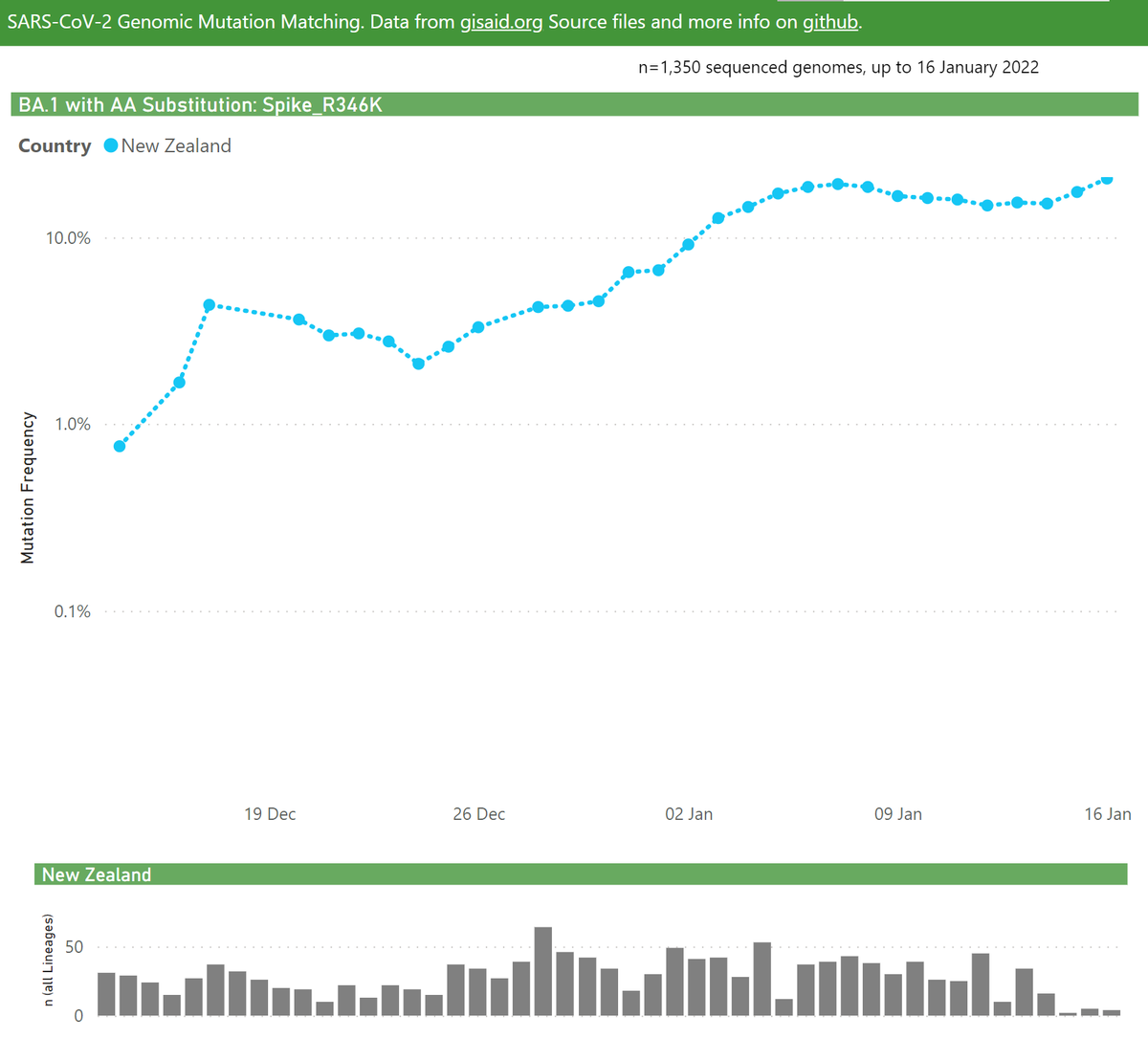
Here's my recent thread on BA.1.1 globally
https://twitter.com/Mike_Honey_/status/1485522285117452288?s=20
Here's my recent thread on BA.2 globally
https://twitter.com/Mike_Honey_/status/1485408294038810624?s=20
• • •
Missing some Tweet in this thread? You can try to
force a refresh


